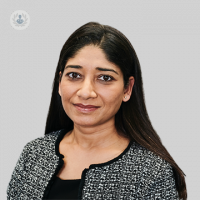Breathlessness: Causes, symptoms, and expert advice
Written in association with:Breathlessness, or dyspnoea, is a common symptom that can affect individuals of all ages. It is characterised by an uncomfortable sensation of not being able to breathe well enough. While it can be a normal response to strenuous activity, when it occurs unexpectedly or persists, it warrants medical attention. In her latest online article, Dr Smriti Saraf gives us her insights.

Causes of breathlessness
There are numerous potential causes of breathlessness, ranging from benign to serious. Some of the common causes include:
- Respiratory conditions: Asthma, chronic obstructive pulmonary disease (COPD), and pneumonia can obstruct airflow, making breathing difficult.
- Cardiac issues: Heart failure, cardiac arrhythmias or coronary artery disease can reduce the heart's efficiency in pumping blood, leading to a buildup of fluid in the lungs and resultant breathlessness.
- Anxiety and panic disorders: Psychological conditions can trigger rapid, shallow breathing, causing a sensation of breathlessness.
- Anaemia: A low red blood cell count reduces the oxygen-carrying capacity of the blood, making you feel breathless with minimal exertion.
- Obesity: Excess weight can restrict lung expansion and increase the work of breathing.
Recognising symptoms
It is crucial to understand when breathlessness is a sign of a serious condition. Seek immediate medical help if you experience:
- Sudden and severe breathlessness
- Associated chest pain
- Blue lips or fingertips (cyanosis)
- Confusion or dizziness
These symptoms could indicate a potentially life-threatening situation such as a heart attack or pulmonary embolism, and emergency medical advice should be sought.
Diagnosis and evaluation
When you visit your healthcare provider for breathlessness, they will perform a thorough assessment, which may include:
- Medical history: Understanding your past medical conditions, medications, and lifestyle.
- Physical examination: Checking your heart, lungs, and general physical condition.
- Diagnostic tests: These may include blood tests, chest X-rays, lung function tests, and electrocardiograms (ECGs) and echocardiograms to identify underlying issues.
Managing breathlessness
Treatment for breathlessness depends on the underlying cause. Some common management strategies include:
- Medications: Inhalers for asthma, diuretics for heart failure, beta blockers and other medications for atrial fibrillation or other cardiac arrhythmias, or antibiotics for infections.
- Oxygen therapy: For patients with chronic lung diseases, supplemental oxygen can ease breathing.
- Cardiopulmonary rehabilitation: A programme of exercise, education, and support to help patients manage chronic cardiac and respiratory conditions.
- Lifestyle changes: Weight loss, smoking cessation, and avoiding known allergens can significantly improve breathing in some cases.
Coping mechanisms
Living with chronic breathlessness can be challenging, but several strategies can help manage the symptom:
- Pursed-lip breathing: Inhale through your nose and exhale slowly through pursed lips to keep airways open longer.
- Relaxation techniques: Practising mindfulness, meditation, or progressive muscle relaxation can not only reduce anxiety-induced breathlessness, but is also very beneficial for breathlessness secondary to cardiac disease
- Positioning: Sitting forward with supported arms can improve the mechanics of breathing.
When to seek help
It is important to follow up with your healthcare provider regularly if you suffer from chronic breathlessness. Timely intervention can prevent complications and improve quality of life.
Dr Smriti Saraf is an esteemed consultant cardiologist. You can schedule an appointment with Dr Saraf on her Top Doctors profile.


